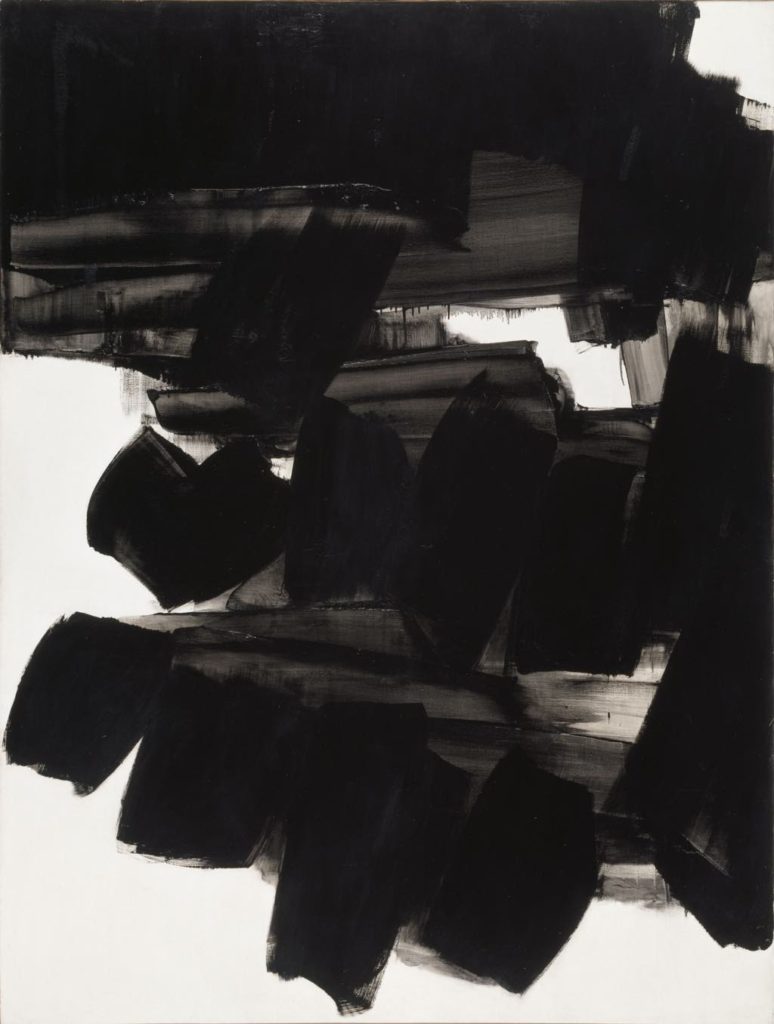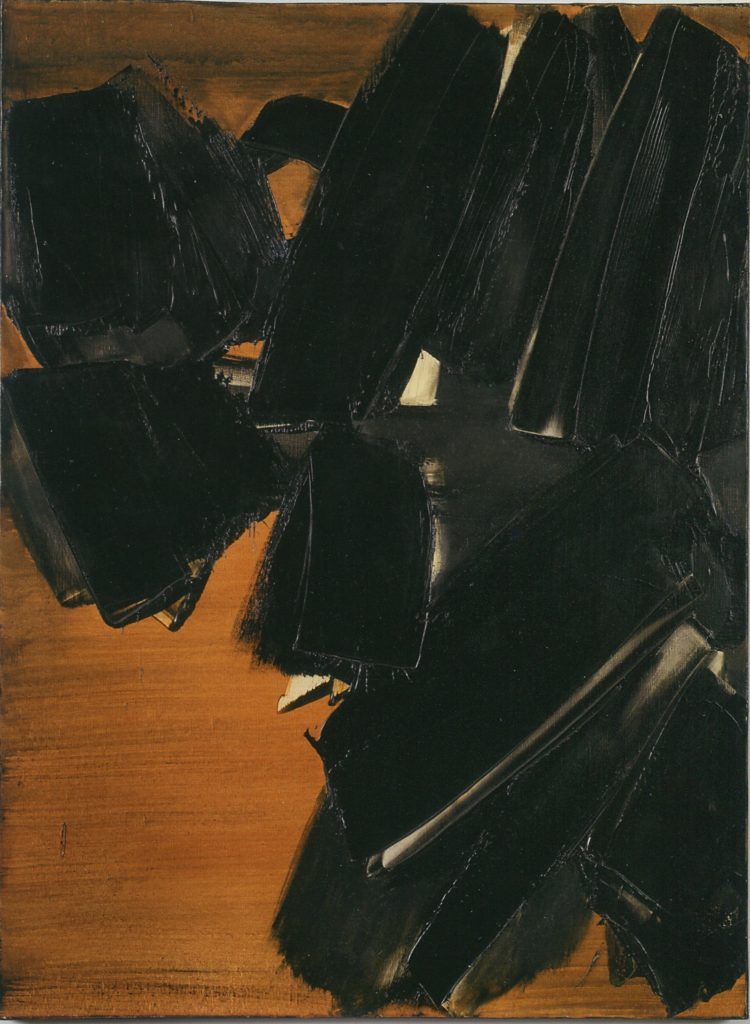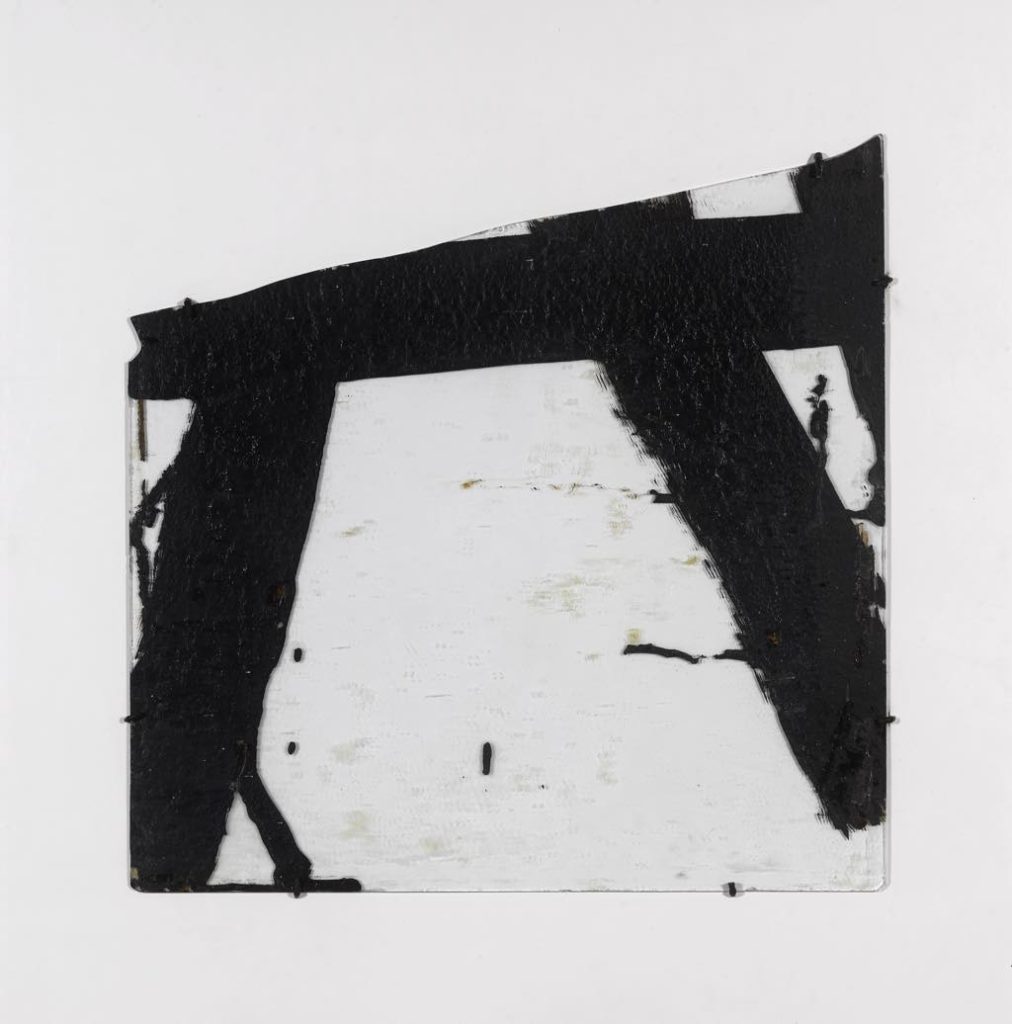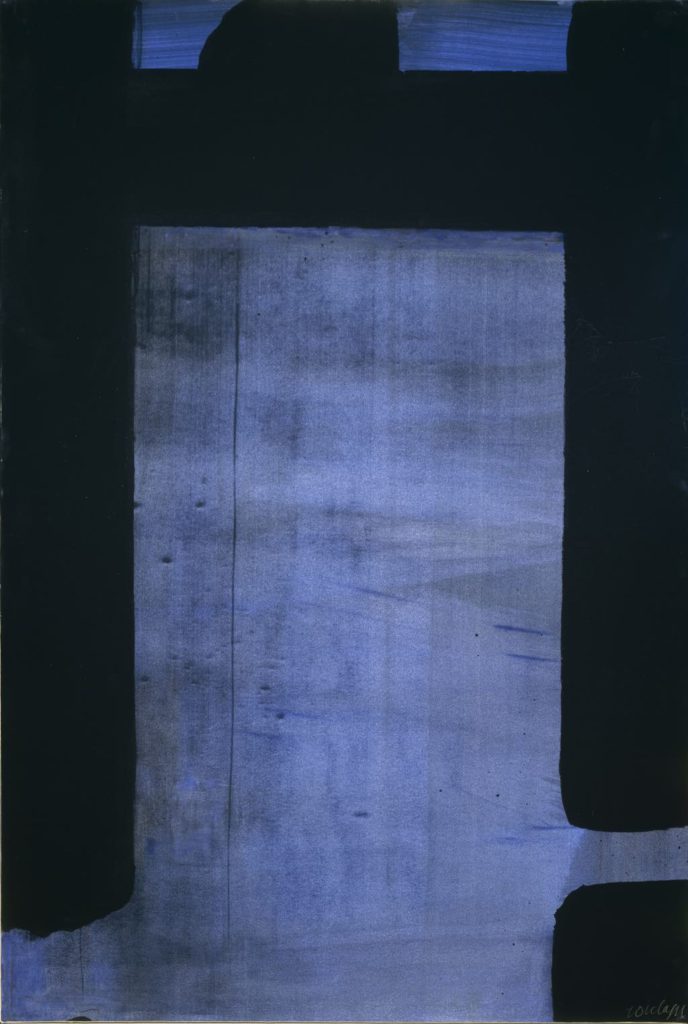
When a friend heard that I was going to see a retrospective of the work of Pierre Soulages at the Fondation Gianadda in Martigny, Switzerland, she said, “But it’s all just black, isn’t it?” Well, no. First of all, Soulages has used color in his paintings at various times throughout his career, and, secondly, Soulages is a magician when it comes to transforming black into a feast for the eyes, full of sumptuous textures and reflections that can transform black into white or color in the eye of the viewer. If black is defined as the complete absorption of light, it could be said that Soulages has found a way to free the light from it.

The show in Martigny is like a Soulages primer, with just a few pieces from each period of his long career – at the age the 98, the artist is still working. Although the Centre Pompidou has lent its entire collection of works by Soulage (others come from the Musée Soulages in Rodez and from private collections), the show is not as extensive and, unfortunately, not as spectacular as the retrospective held in the Paris museum in 2009.
The lighting at Pompidou brought out all the beauty of the artist‘s work, showing the many ways he could create infinite variations with black paint. Some surfaces are flat with a little white showing through. Others are almost sculpted, with waves of thick impasto. Glossy paint reflects light, creating changing effects as the viewer walks past them. Others contrast matte and glossy surfaces in the same painting. Still others, mostly from the early years, use pattern to create interest. Sometimes the visible brushstrokes break up the surface, creating different ways of playing with the light.

The Martigny exhibition, which presents 36 works, was curated by Camille Morando and Bernard Blistène of the Musée National d’Art Moderne. It starts off with a few handsome abstract works on paper from the “Brou de Noix” series (1948), for which the artist, who makes all his own materials, painted with walnut stain. His penchant for using unusual materials continued in the 1950s with the “Goudron sur Verre” series, in which he painted with tar on pieces of broken glass from a greenhouse, two rare examples of which are on view here.

Aside from the great variety of treatments of black mentioned above, the show also includes a few works that use color brilliantly, notably “Gouache Vinylique sur Papier 109 x 73 cm, 1977,” in which the central block and other touches of blue positively glow amid the surrounding black.
The show ends with four recent paintings, made between 2011 and 2017, that demonstrate that the artist is still the master of abstraction in black, still finding the “secret light” in the supposed absence of light.
The Soulages story continues in another wing of the foundation with a show of handsome photos of the artist taken over many years by Vincent Cunillère, offering a look at the artist’s working methods (he was painting on the floor even before Jackson Pollock thought of it) and materials. One even shows him burning a painting that was not up to his standards.
The Gianadda Foundation, which is celebrating its 40th anniversary this year, provides a good reason for a visit to the mountain-surrounded town of Martigny, and not just for its art exhibitions. The foundation has a lovely sculpture park full of works by many of the great modern artists, from Germaine Richier and Antoni Tàpies to Henry Moore and Niki de Saint Phalle. A Roman temple discovered when the foundation was being built can be seen on the grounds, while the restaurant in the park offers sustenance. As if that weren’t enough, the foundation also has an archaeological museum and an automobile museum full of rare early vehicles.
The program for the foundation’s summer concert series, featuring top-drawer performers, includes, among others, Cecilia Bartoli, Renaud Capuçon, and William Christie and Les Arts Florissants. See the website for details.
Favorite

If you have not been, the Musée Soulages in Rodez is a delight…complete with the Cafe Bras next door.